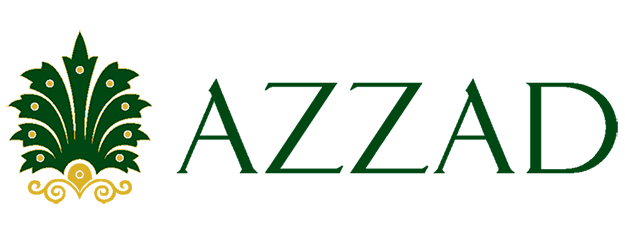Planning for retirement isn’t always easy. But there are concrete ways to help you make it reality—including taking advantage of a company retirement plan and investing on your own. For Shariah-sensitive investors, you’ll also need to think about finding halal investment options. This paper suggests practical steps to getting started.
ABSTRACT
When you envision retirement, you probably see yourself living comfortably, doing what makes you happy. Your dreams could be as lofty as traveling the world or as simple as spending more time with your friends and family. Everyone’s vision is unique.
Fortunately, whatever your dreams, there are concrete ways to help you make them a reality—including taking advantage of a company retirement plan and investing on your own. For Shari’ah-sensitive investors, there are other considerations like finding Halal investment options. This paper outlines some practical steps to get started.
ENHANCE YOUR INCOME STRATEGY
Like so many other major life events, a successful retirement depends on advance planning. No matter what your age, now is the time to start thinking about where your retirement income will come from. Several possible resources may be available.
For instance, some people assume that Social Security will meet all of their retirement income needs. Others believe that Social Security will dry up before they retire. While no one can say exactly what the future holds, the truth probably falls somewhere in the middle.
According to the Social Security Administration’s Fast Facts & Figures about Social Security, 2012, the government-run program provides less than 40% of the income received by today’s retirees. While some retirees get just a small percentage of their income from Social Security, others rely on the program as their only income source. As you think about how Social Security will fit into your plan, consider that it was never intended to be a retiree’s only source of income. Social Security is meant as a safety net to help keep people out of poverty.
Another possible income resource is a traditional defined-benefit pension plan. These employer-provided plans, which reward long-term employees with a steady stream of income in retirement, were common during the twentieth century. Over the past couple of decades, however, traditional pension plans have become increasingly scarce. Even if you are one of the lucky ones who will receive traditional pension income in retirement, you may still need an extra cushion to be able to retire comfortably. This paper outlines your other retirement planning options
TAX-ADVANTAGED COMPOUNDING
Regardless of the way you save, it’s important first to understand the value of compounding when you plan for retirement. Compounding is such an important idea that Albert Einstein once called it the most powerful force in the universe! Here’s how it works.
Let’s assume you have $20,000 to invest. You put $10,000 into a taxable account that earns 6% per year, and use a portion of these assets to pay taxes attributable to the account’s earnings. You put the other $10,000 into a tax-deferred account such as a 401(k) that also earns 6% per year. Assuming that you’re in the 28% tax bracket, in 30 years your taxable account will be worth about $35,500, while your tax-deferred account will be worth over $57,000. That’s a difference of over $21,000.
Even if the funds invested in the tax-deferred account are subject to federal income tax upon withdrawal—as they would be if you made pretax contributions to a 401(k)—you would come out ahead.
This is true even if you took the entire amount in the tax-deferred account as a lump-sum distribution after 30 years and paid tax on the full amount (at 28% tax, you’d end up with a little over $41,000). Of course, most individuals draw on their retirement savings gradually during their retirement years–when they may be in a lower tax bracket–rather than taking a large lump-sum distribution.
Of course, bear in mind that this example is hypothetical and for illustrative purposes only. It assumes a fixed 6% rate of return; however, no investment return can be guaranteed. The rate of return on your account will change over time. This example also does not take into account taxes or investment fees, both of which will apply to your actual situation. Withdrawals from your retirement savings plan are taxed at then-current rates, and distributions prior to age 59½ are subject to a 10% penalty tax.
MAJOR CONSIDERATIONS
It’s never too late to start saving for retirement, but depending on where you are in your career, you may have to think about saving and investing more aggressively. Here are a few considerations:
How much will I need in retirement?
A good rule of thumb is that you should plan to have eight times your final (annual) salary by the time you reach 67 if you want to replace 85% of your pre-retirement income. To be safe, plan to have 10 times that final year’s salary.
How much do I need to save?
Take an honest look at your current spending. Just as in planning for other financial goals, you need to implement a savings plan. Think about establishing a long-term systematic savings plan to cover your needs in retirement. If you haven’t already done so, an Azzad financial planner can help.
Where should I invest my money?
Let’s say you’ve freed up some cash, and now you need to know where to put your money to get the most out of it. There are two tax-advantaged retirement savings vehicles you should be familiar with, if you’re not already:
- Employer-sponsored retirement plans
- Individual Retirement Accounts, or IRAs
Let’s take a look at those two options in more detail.
EMPLOYER-SPONSORED PLANS
Does your employer offer a retirement plan? If so, be sure that you’re taking full advantage of it.
Some retirement savings plans, such as 401(k) plans, 403(b) plans, SIMPLE IRAs, and thrift savings plans, allow employers to match contributions that you make up to a specified level.
Since this is basically free money (once you’re vested in those employer dollars), you’ll want to make sure you capture all of it. Contribute enough to the plan so that your employer contributes the maximum matching amount. For more information, refer to the specific plan in which you participate.
CAUTION: Shari’ah-sensitive investors are often deprived of investment options that align with their values in employer-sponsored plans, so it’s important to either request a self-directed brokerage account as part of your plan or request that your benefits administrator add Halal mutual funds like the Azzad Funds to your default investment options. Your Azzad advisor can help you with this.
INDIVIDUAL RETIREMENT ACCOUNTS (IRAs)
IRAs offer significant tax incentives to encourage you to save money for retirement. And unlike a plan offered by an employer, you get to run them yourself. You can contribute up to $5,500 to your IRA in 2018 ($6,500 if you’re age 50 or older), as long as you have at least that amount in compensation for the year.
The types of IRAs that you can use (and the corresponding tax advantages) depend upon your income level, filing status, and whether or not you’re covered by an employer-sponsored retirement plan. And don’t forget your spouse. Even if s/he had no compensation for the year, you may be able to contribute to a spousal IRA on their behalf.
CHOOSING YOUR INVESTMENTS
It is important to understand that the earnings potential offered by an employer-sponsored plan or IRA is not generated by the plan, but by the investments held by the plan (e.g., mutual funds).
Selecting the right mix of investments within your plan is just as important as choosing the right plan itself. When making your choices, many factors should be considered including your time horizon, your tolerance for risk, and the tax implications. Azzad Asset Management is proud to offer the Azzad Funds, including both stocks and halal fixed-income to help you meet all your retirement savings goals.
Talk to us today to get started with an Azzad IRA or to add the Azzad Funds to your employer-sponsored retirement plan.
Note: Information contained in this publication is not intended to replace specific advice or recommendations by your investment advisor. It is not intended to provide tax, legal, insurance or investment advice, and nothing in this publication should be construed as an offer to sell, a solicitation of an offer to buy, or a recommendation for any security. Unless otherwise specified, you alone are solely responsible for determining whether any investment, security or strategy, or any other product or service, is appropriate or suitable for you based on your investment objectives and personal and financial situation. Asset allocation and diversification cannot guarantee a profit or insure against a loss. There is no guarantee that any investment strategy will be successful; all investing involves risk, including the possible loss of principal. You should consult an attorney or tax professional regarding your specific legal or tax situation. Please check with your advisor for more information: 888.86.AZZAD or www.azzad.net.
Investments are not FDIC insured, nor are they deposits of or guaranteed by a bank or any other entity, so you may lose money. Azzad does not guarantee that your investment objectives will be achieved. Past performance cannot guarantee future results. Azzad only transacts business where it is properly registered or notice filed, or excluded or exempted from registration requirements. The Azzad Ethical Wrap Program is made available through an Investment Advisory Agreement and the firm’s
ADV Part II brochure. The Azzad mutual funds are available by prospectus only. To request a free copy including other important disclosure information, please call 888-862-9923, 5/2014©


